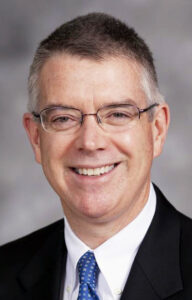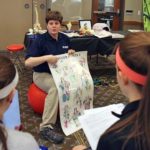(Editor’s note: The Catholic Messenger introduces a new monthly column, Catholic Health Care Today. Catholic health care experts from the St. Thomas Aquinas Guild of the Quad Cities share their thoughts on timely issues.)

In the arena of medical education, topics of interest are often introduced with a “case study.” The following case is a good start for our topic:
“An 87-year-old man reports immediate shoulder pain while lifting a light object. X-rays revealed a lesion eroding the bone of the upper arm. Similar lesions were found in multiple ribs, the spine and pelvis. CT scan demonstrated a lung mass, and a biopsy of the shoulder lesion confirmed metastatic adenocarcinoma, likely from the lung. The patient, his wife of 59 years, and their six children were advised of his poor prognosis and very limited life expectancy. The patient expressed his desire to avoid aggressive therapy and ‘die comfortably.’ Ultimately, his pain level required hospitalization, where radiation to painful metastatic lesions provided much better pain control. He was transferred to a skilled care unit, and then to hospice. Five days later, he was surrounded by his family when he died. The option of assisted suicide was not raised by the patient, family, or physicians.”
The debate regarding physician-assisted suicide (PAS) rages on many fronts: ethical, medical, emotional, social and theological. In this newspaper and others, Bishop Thomas Zinkula has outlined the Catholic Church’s opposition to PAS. With that faith-focused foundation, a practical basis for opposition to PAS is helpful. When a poor and fatal prognosis is clear, fear and anxiety are normal emotions. A difficult question arises: “What do I/we do now?” Some patients decide to forgo direct treatment of the disease. It is in these cases that the question of PAS is likely to arise.
In PAS debates, a reference to “natural law” often arises. PAS proponents may mistakenly view this as a solely religious stance. However, a belief in natural law does not require a theological basis. An understanding of natural law does not even require a belief in God. It is discernible by reason. Our country’s founding fathers had affiliations with varied religious denominations, yet many could be best described as “Deists.” The Declaration of Independence clearly outlines their firm belief in “the laws of nature and of Nature’s God.” These principles have been recognized since the ancient Greeks, long before the time of Christ, and our American ancestors cited these beliefs in their dreams for this country. Natural law is a belief in immutable facts, and particularly the value and dignity of life. When someone allows others to end their life, one life is lost, but all life is cheapened.
Health care providers have a duty to help patients manage their pain. This effort may even hasten the death of the patient. However, the intent is to treat the person and not to kill them. In the words of the late physician and bioethicist, Dr. Edmund Pellegrino, “the cure may be futile, but care is never futile.” The undeniable worth of each person was, and remains, the lifeblood of the American civil rights movement. The dignity of a person is not given to them by others. It is intrinsic. Whether a person is healthy or ill, productive or nonproductive … all extrinsic opinions are irrelevant. Regardless of their condition, each person is intrinsically valuable. “Somebody becomes a nobody,” when PAS is allowed.
The legalization of PAS destroys the patient-physician relationship. Imagine asking yourself, “Will my doctor kill me if he thinks I’m too sick?” In the Netherlands, many patients insist on signing documents guaranteeing they will not be euthanized without their clear consent. An increasing number of elderly Dutch citizens carry cards stating they do not want to be euthanized.
In the PAS debate, the term “slippery slope” is often heard. In the Netherlands, euthanasia was “legalized” in 2001. By 2004, children of any age could be euthanized “if doctors believe their suffering is intolerable.…” By 2011, the criteria for euthanasia expanded to include “decline in financial resources, social network and social skills.” Sadly, being poor and alone qualifies for death.
The American journey with PAS began in Oregon, but that state’s own statistics conflict with the aim of “avoiding pain and suffering.” In 2014, the Oregon Public Health Division reported the most common reason euthanasia was chosen was “loss of autonomy,” followed by “fear of being a burden” and “loss of control.” Concern about “inadequate pain control” was sixth of seven reasons, followed only by “financial concerns.”
The case presented in this column is not unusual. But it is personal. The patient was my father. Dad was treated in a 25-bed hospital and a small rural nursing home and hospice. He received wonderful care and attention to his needs and wishes. Proper and compassionate care doesn’t require big buildings or advanced medical equipment. The critical factor is people who intently care for the patient and family and do their best to make their last days meaningful. With PAS, Dad and our family would have been robbed of some of our best memories.
Aristotle once noted that small errors at the beginning of an argument lead to large errors at the end. If the interests of a society are valued over the interests of its individual members, the risks are great. Seven-thousand years ago, Hippocrates vowed “to abstain from doing harm.” There is no greater harm that a physician can do than to take their patient’s life. A single step along the path to acceptance of euthanasia will erode and ultimately destroy the trust we must have in those who care for us.
(Dr. Millea is a physician and member of St. Paul the Apostle Parish, Davenport.)











